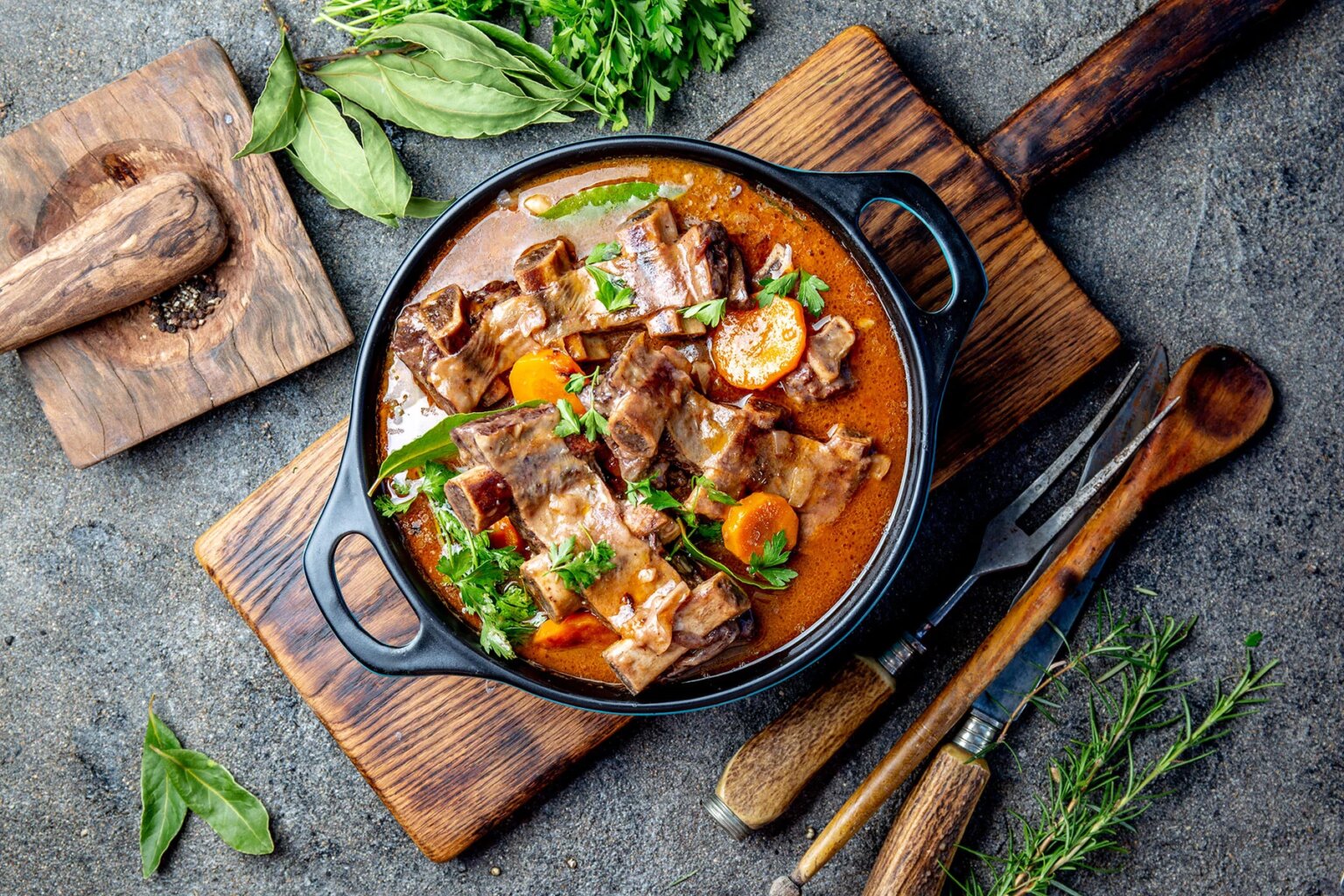For many people, their introduction to French food comes in the shape of wine and cheese. From brie and Burgundy to camembert and Chardonnay, there are plenty of delicious pairings to choose from. But there’s a whole world of French cuisine beyond the cheeseboard.
French food relies on simple combinations of rich, natural flavors that come together to create unforgettable, internationally-renowned dishes. In fact, French cuisine is so highly regarded around the world that in 2010, UNESCO added it to its list of intangible cultural heritage.
To help you bring the wonder of French cuisine into your kitchen, here’s our list of the top 10 French foods you simply must try at home – with recipes. Bon appétit!
Allianz Travel
Get insured for your next trip with Allianz Travel. A world-leader in travel insurance, their tailor-made plans will safeguard you on your trips within and beyond France. Whether you’re planning a weekend-getaway or moving your life overseas, have complete peace of mind wherever you go with Allianz Travel.
1. Soupe à l’oignon
If you’re in a soup mood, why not try Marseille’s traditional soupe de poisson à la rouille. This is a traditional French soup made of onions and beef stock, usually served with croutons and melted cheese on top.
Dating back to Roman times, this was traditionally a peasant dish, although the current version dates from the 18th century. Once a fisherman’s favorite, this soup is characterized by a dollop of garlic and saffron mayonnaise placed on top.
The soup’s unique flavor comes from the caramelization of the onions, which often have brandy or sherry added during the slow-cooking process.
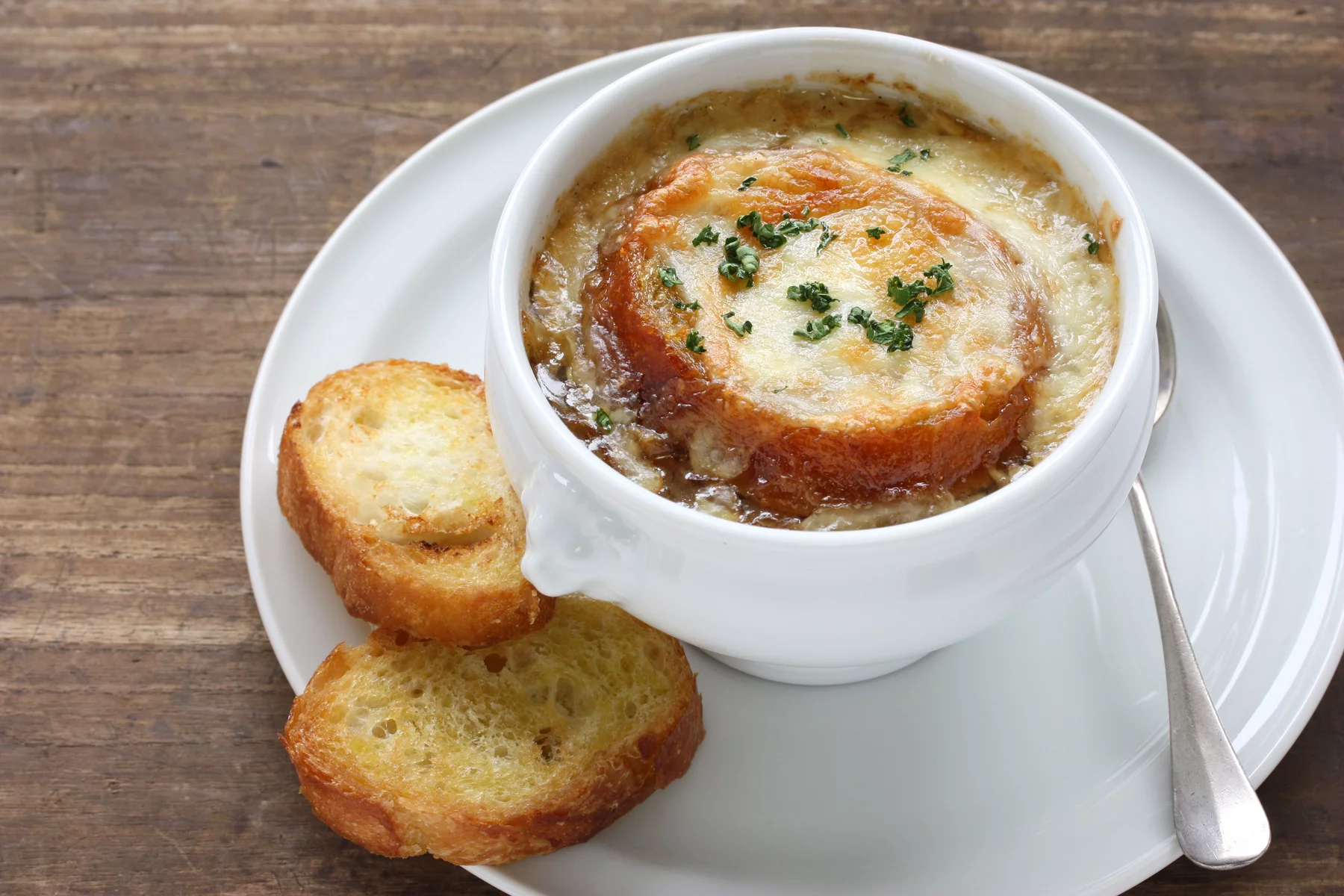
Make your own soupe à l’oignon
- Choose a classic French onion soup recipe
- Use a slow cooker
- Try an authentic French-language recipe
2. Coq au vin
This quintessential French food was popularized by American personality Julia Child, becoming one of her signature dishes. The dish sees chicken braised with wine, mushrooms, salty pork or bacon (lardons), onions, garlic, and sometimes even a drop of brandy.
Although the name translates as ‘rooster in wine’ – the braising is ideal for tougher birds – the recipe usually uses chicken or capon. The wine is typically Burgundy, although regional variations of the dish exist across France that use local wines. These include coq au vin jaune (Jura), coq au Riesling (Alsace), and coq au pourpre (Beaujolais nouveau). Believe it or not, there’s even a coq au Champagne (Champagne).
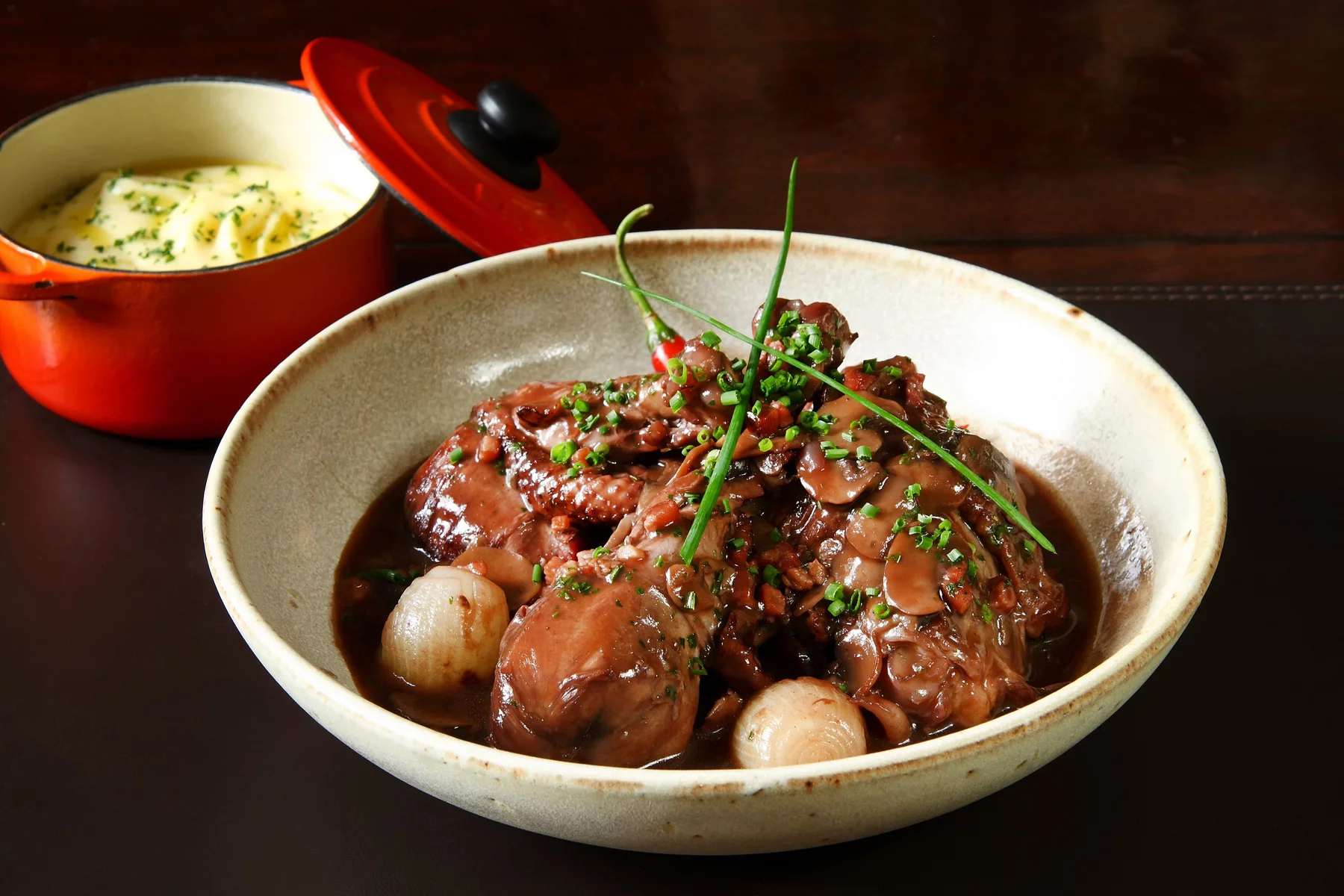
Make your own coq au vin
- Watch a video of Julia Child’s coq au vin
- See renowned French chef Paul Bocuse’s coq au vin recipe
- Or check out Martha Stewart’s recipe for coq au vin
3. Cassoulet
Cassoulet is a comfort dish of white beans stewed slowly with meat. The dish typically uses pork or duck but can include sausages, goose, mutton, or whatever else the chef has lying around. This peasant dish originates from southern France and is popular in Toulouse, Carcassonne, and Castelnaudary.
The name of the dish comes from the pot (cassole) that it’s traditionally baked in. This pot is a staple in many French homes, highlighting the popularity of this rich, hearty food that’s perfect for those colder months.
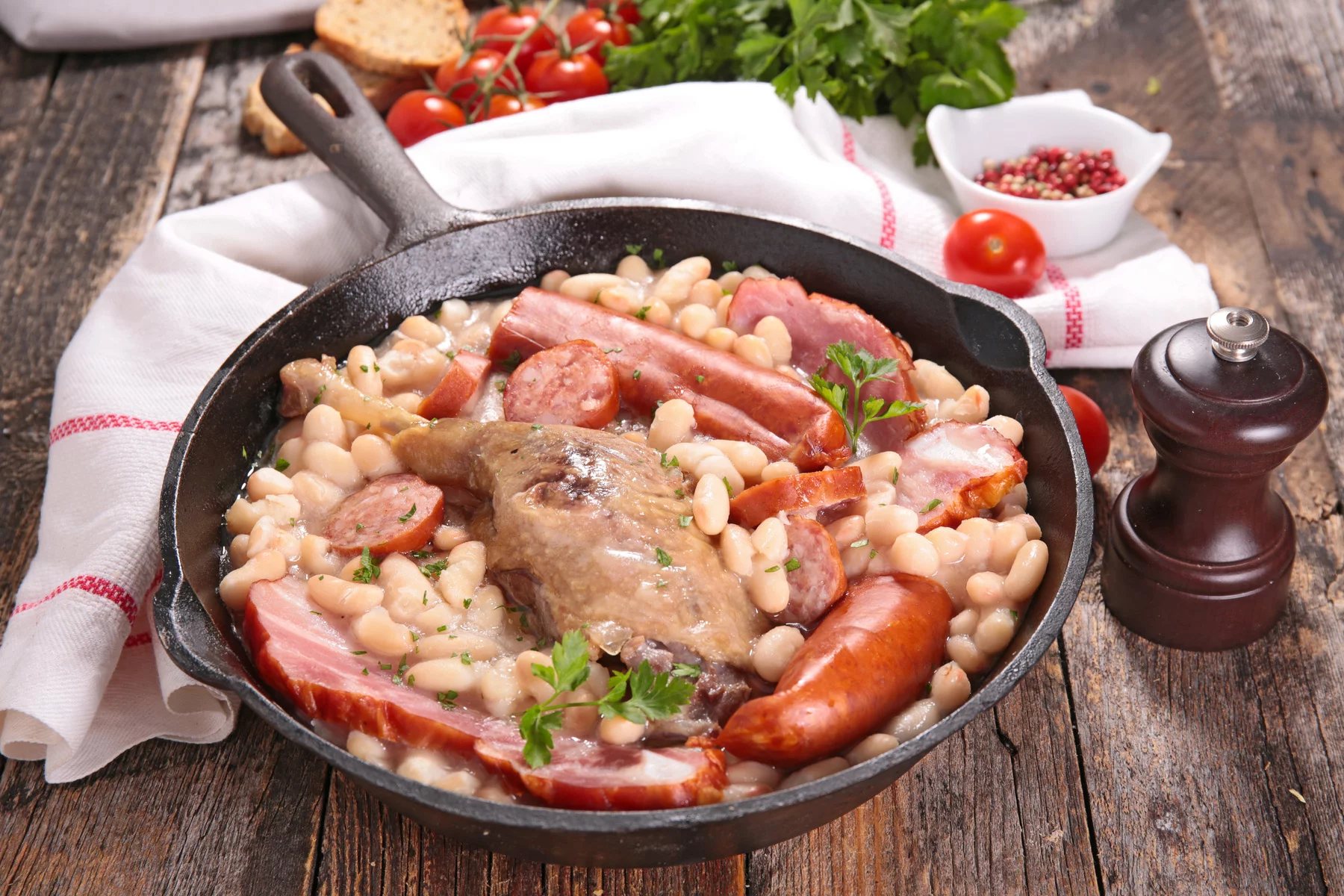
Make your own cassoulet
- Try French chef Raymond Blanc’s cassoulet recipe
- How to cook perfect cassoulet variations
- This recipe is a Toulouse regional version
4. Bœuf bourguignon
Dishes don’t get much more typically French than bœuf bourguignon. Originally a peasant dish, this recipe is now a staple in French restaurants around the world. The dish hails from the same region as coq au vin – that’s Burgundy in eastern France – and there are similarities between the two dishes.
Bœuf bourguignon is essentially a stew made from beef braised in red wine, beef broth, and seasoned vegetables including pearl onions and mushrooms. Traditionally, the cheap cuts of meat would be tenderized in wine for two days to intensify the flavors, although some shortcuts can be taken. Every August in Burgundy, the Fête du Charolais celebrates the dish, along with plenty of music and wine.
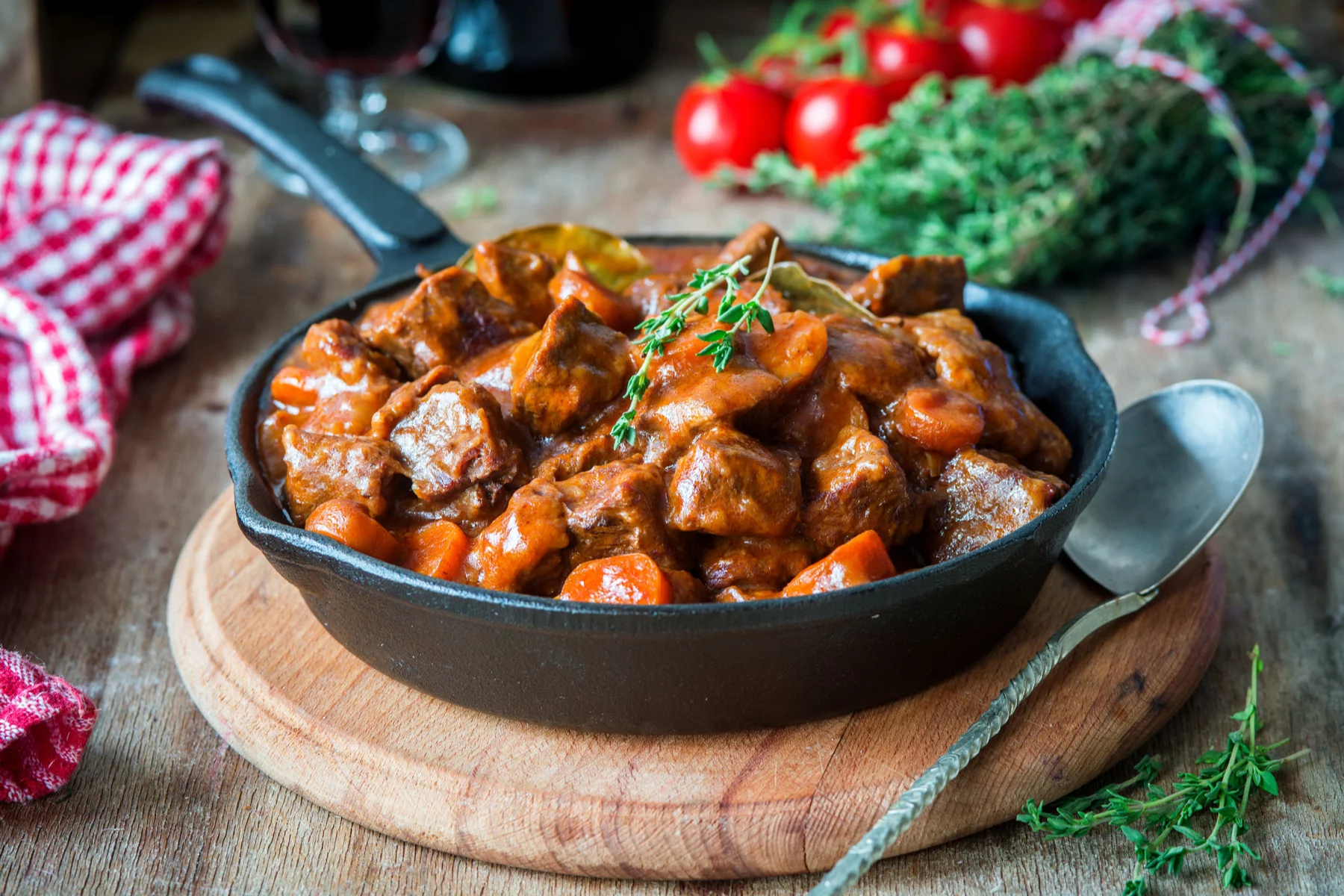
Make your own bœuf bourguignon
- French-language recipe from Larousse
- Watch Julia Child’s bœuf bourguignon recipe
- Or try Delia’s delicious bistro classic
5. Chocolate soufflé
The word soufflé comes from the French verb ‘to blow’ and, as the name suggests, this is a light, airy dessert. The dish dates back to the early 18th century and nowadays is a staple on dessert menus around the world.
The crispy chocolatey crust is perfect for letting the creamy chocolate ooze out for a rich surprise. However, it doesn’t have to be sweet. In fact, cheese soufflés are just as delicious if you’re looking for something a little saltier.

Make your own chocolate soufflé
- Make hot chocolate soufflé or try a flourless, gluten-free version
- Madame Le Figaro’s soufflé au chocolat for two (in French)
- Try a savory soufflé au cantal (French recipe)
6. Flamiche
Flamiche means ‘cake’ in French, and this dish originates from northern France, near the border with Belgium. It has a puff-pastry crust filled with cheese and vegetables and resembles a quiche.
The traditional filling is leeks and cream, although various variations exist. There’s also a pizza-like version of flamiche, which comes without the top crust of the pie. For a southern French twist, try the thin, crusty pissaladière, which has anchovies, onions, and olives.

Make your own flamiche
- Quick and easy French-language recipe
- Try it with wild mushroom and artichoke
- This flamiche recipe uses leek and tarragon
- Try the southern French version of pissaladière
7. Confit de canard
Confit de canard is a tasty French dish of duck (although some chefs use goose or pork), and is one of the finest French dishes. The meat is specially prepared using ancient preservation and a slow-cooking process (confit). This sees the duck marinated in salt, garlic, and thyme for around 36 hours and then slow-cooked in its own fat at low temperatures. It is typically served with confit roasted potatoes and garlic on the side.
Today, this dish is popular all over France, although you’ll find the best variations in the Gascony region.

Make your own confit de canard
- A skinny version of the famously fatty French dish
- Try duck confit with lentils
8. Salade Niçoise
If you’re struggling to come up with the ideal summer menu, why not consider Salade Niçoise? This is a typical French salad from the Provence region. Often eaten as a side dish, it can also be a light meal on its own.
The salad is a mix of lettuce, fresh tomatoes, boiled eggs, (canned or fresh) tuna, green beans, Nicoise Cailletier olives, and anchovies. However, there are plenty of different variations to choose from.
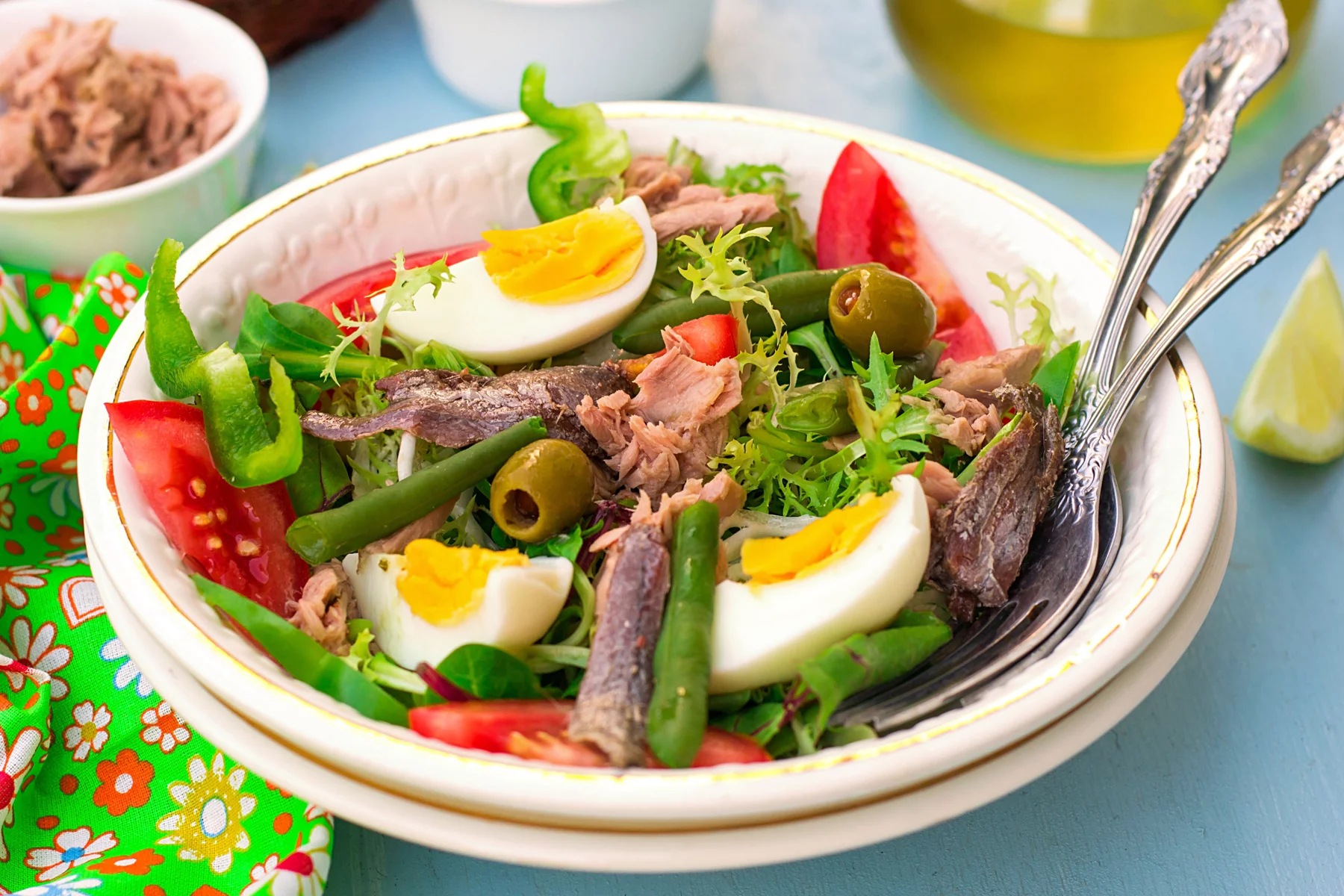
Make your own salade niçoise
- A basic guide to salade niçoise
- For a twist, use salmon or beets
9. Ratatouille
Not just a lovable cartoon about a friendly rat, Ratatouille is also one of France’s most iconic dishes, originally hailing from Provence. The dish sees vegetables shallow-fried and then layered in a casserole dish before being baked in an oven.
French chefs have been debating whether the vegetables need cooking beforehand for centuries, but however you prepare them, the results are still great. This traditional peasant dish can be a side dish, appetizer, or main course, and tastes great with red wine and fresh, crusty bread.
A similar Basque dish is pipérade, which typically adds ham and sometimes eggs to the stewed vegetable mix.
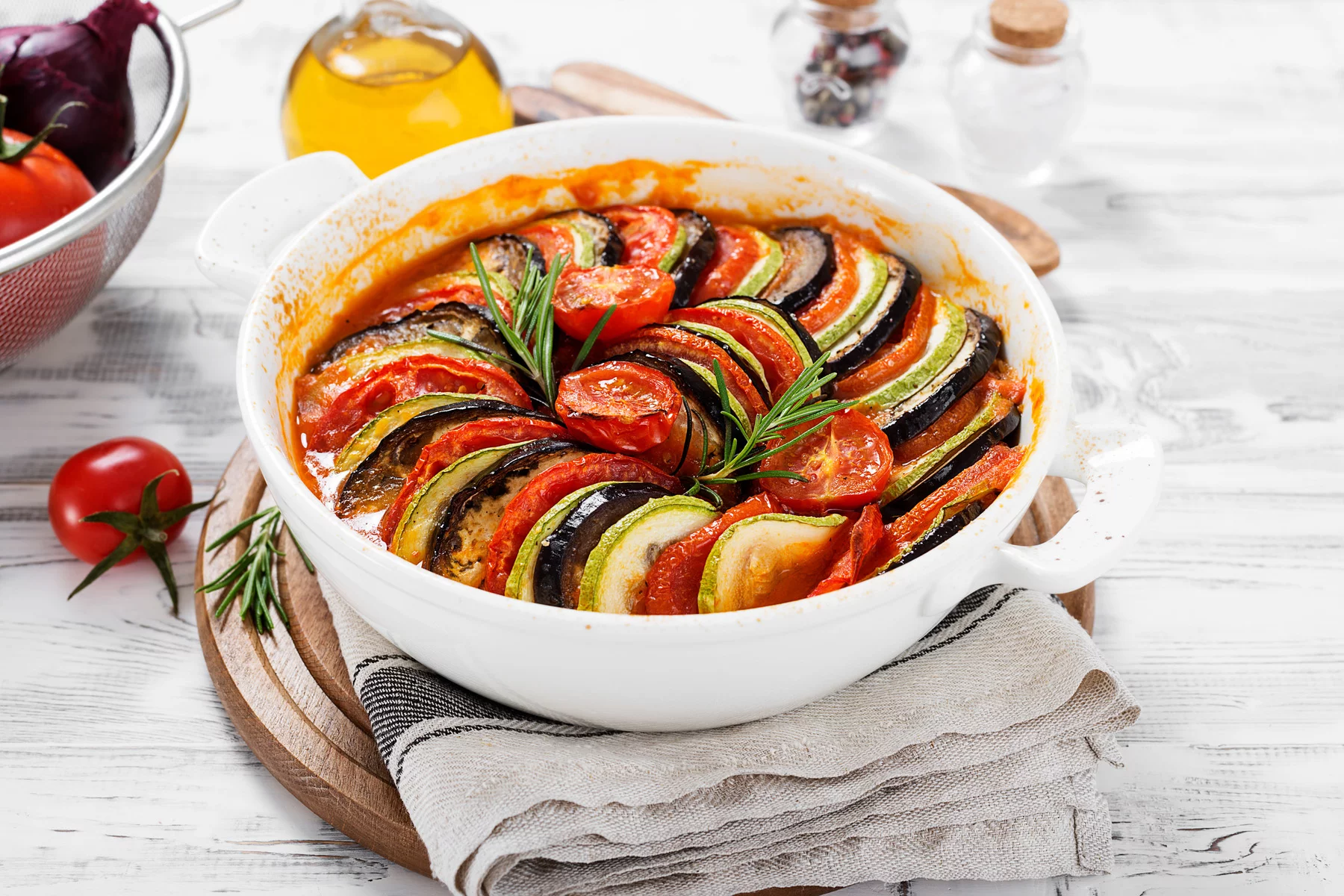
Make your own ratatouille
- Watch a Provence local make their ratatouille recipe
- Or try the French Basque pipérade
10. Tarte Tatin
According to culinary legend, tarte Tatin started life as a mistake. In 1898, hotelier Stephanie Tatin was making a traditional apple pie when she accidentally left the apples cooking in sugar and butter for too long. In a hurry to rescue the dessert, she put the pastry base on top of the burning fruit and put it in the oven. She supposedly served the upside-down tart to her guests at Hôtel Tatin, and the result turned into the hotel’s signature dish. And we can still taste this excellent mistake today.
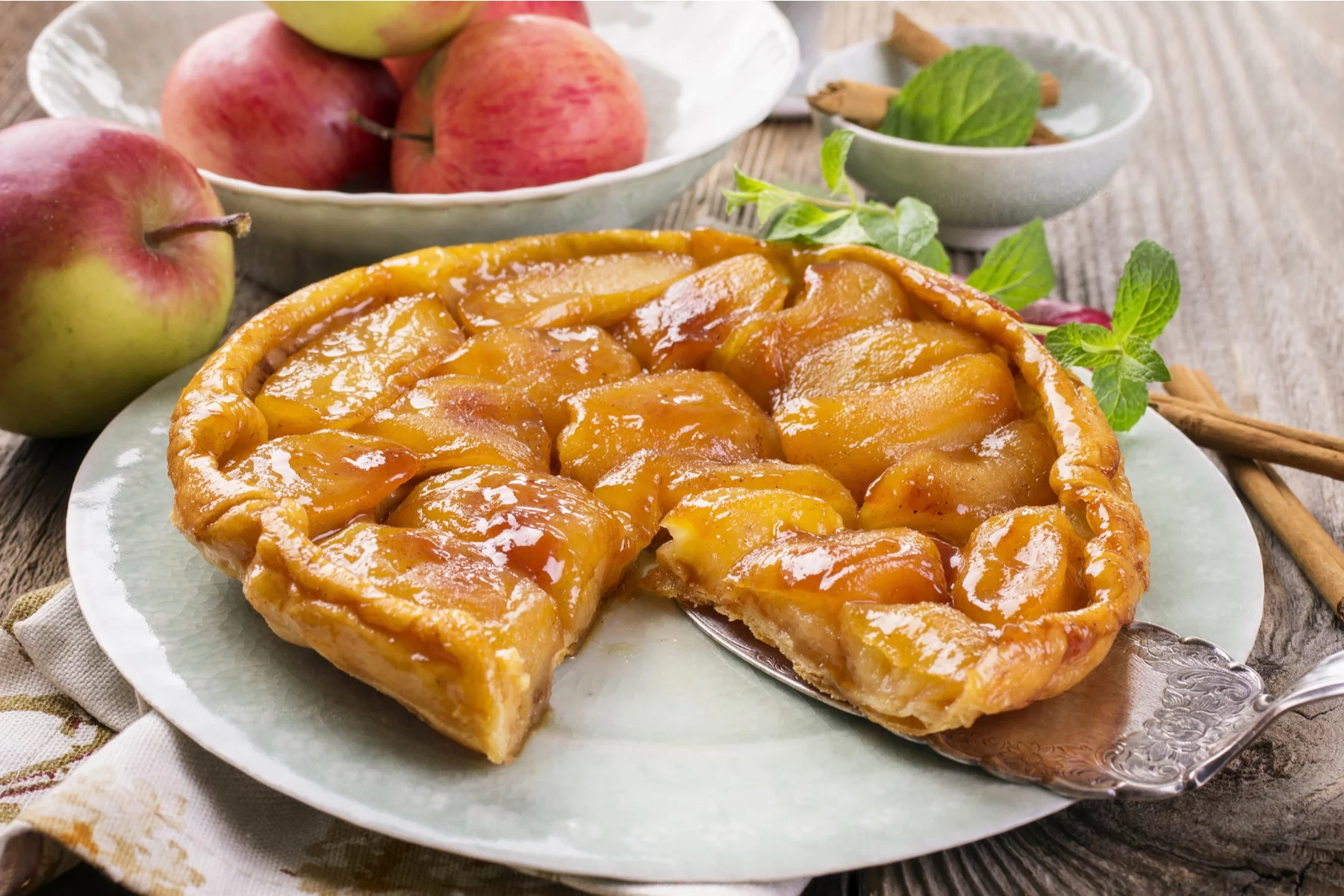
Make your own tarte Tatin
- Michelin-starred chef Raymond Blanc’s take on tarte Tatin
- Watch Jamie Oliver cook tarte Tatin
- A French-language recipe from the pages of Le Parisien
And something for after…
To create the ultimate dinner party, it’s important to remember that the fun doesn’t start and finish with the main courses. There’s plenty more French food you can pack into your night to keep the fun going until the early hours.

It’s safe to say that no French dinner party is complete without cheese and wine. To help you impress your friends and family, read our ultimate guide to French wine. We go through all the different regional varieties on offer and give advice on how you can create the ideal pairing.
